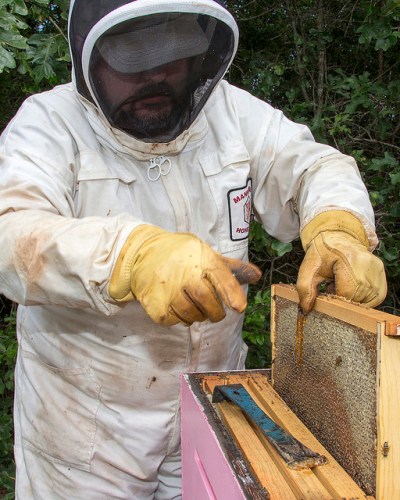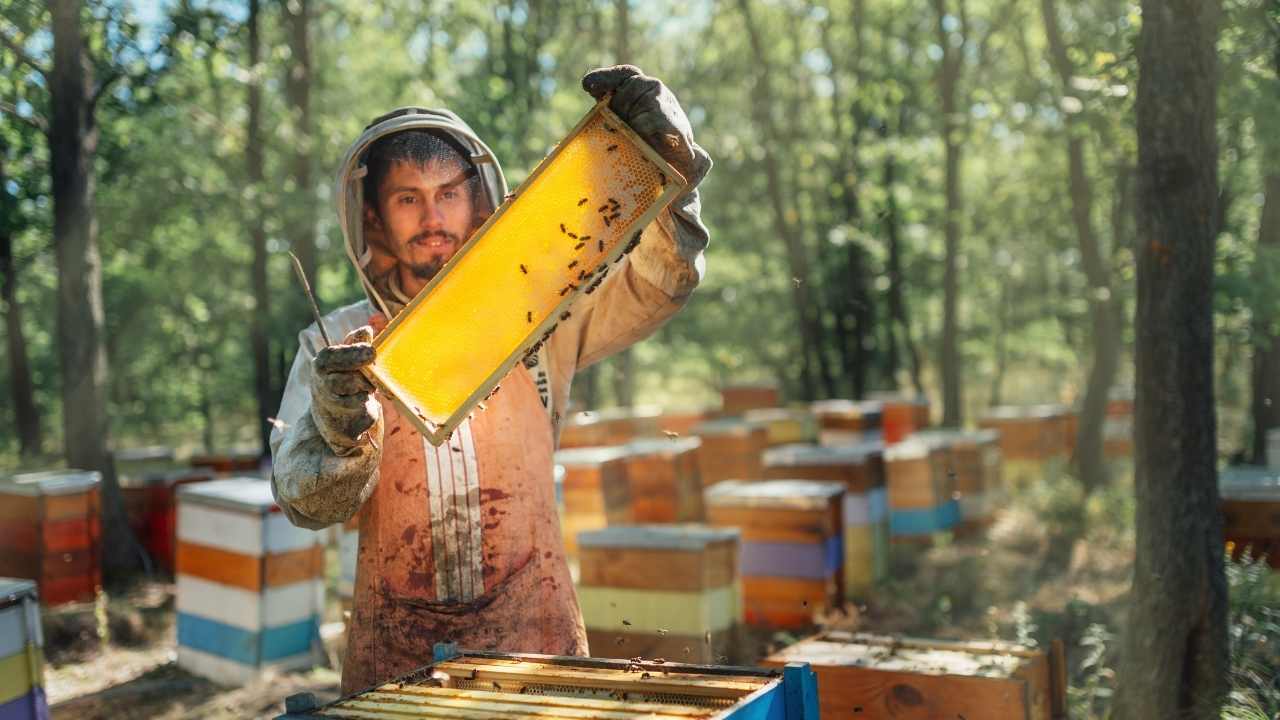
Have you ever found yourself in the backyard, admiring the beautiful flowers and plants, wishing for something more? Perhaps you’ve seen a bee buzzing around, pollinating your garden and thought to yourself, "I wish I could have my own bee colony." Well, today is your lucky day! Starting and sustaining your own bee colony is not only possible but also incredibly rewarding.
Coincidentally, bees are one of the most important insects on our planet. They play an essential role in pollinating crops that provide food for both humans and animals. Without bees, we would see a drastic decline in agriculture production, leading to devastating consequences for our ecosystem. By starting your own bee colony in your backyard, you’re not only satisfying a personal desire but also serving the greater good of our planet. So let’s dive into some tips and tricks to help you get started on this buzz-worthy adventure!
Choosing the Right Location for Your Hive
Now that you’re ready to get your hive going, it’s time to pick the perfect spot for it in order to ensure happy and healthy bees. When choosing a location, consider the sun exposure. Your bees need enough sunlight to stay warm and active, but not too much that they become overheated. A location with morning sun and afternoon shade is ideal. Additionally, having nearby water sources is crucial as bees need access to water for hydration and cooling their hives.
Another important factor when choosing a location is vegetation. Bees rely on flowers for nectar and pollen which are essential for their survival. Make sure there are plenty of flowering plants in the area surrounding your hive. However, be aware of potential hazards such as pesticides or other chemicals that can harm your bees. Also, avoid placing the hive near areas where people frequently gather or walk through as this can disturb the colony and cause stress among the bees.

Understanding bee behavior is crucial in ensuring a successful beekeeping experience.
Understanding Bee Behavior
Understanding the behavior of bees is crucial for successfully maintaining a healthy and thriving hive in which they can flourish. Bees are highly social creatures, living in colonies that consist of thousands of individuals. They have a complex communication system that allows them to work together efficiently towards their common goal of protecting the queen and gathering nectar and pollen.
One important aspect of bee behavior to understand is swarm prevention. Swarming occurs when a colony becomes overcrowded, prompting some bees to leave with the old queen in search of a new home. To prevent this from happening, it’s important to provide enough space for the colony to expand and replace an aging or failing queen as needed. By staying on top of these factors, you can help ensure that your hive remains strong and productive over time. Now that you understand more about bee behavior, it’s time to move on to obtaining your bees.
Obtaining Your Bees
It’s essential to know how to obtain bees if you want to establish a healthy and thriving hive. First, make sure that you are following your local beekeeping regulations before getting started. Obtain the necessary permits or licenses if required and ensure that you are in compliance with any zoning ordinances.

Once you have taken care of the legal aspects, it’s time to get your hands on some bees. You can purchase packages of bees from reputable suppliers or source them from other beekeepers in your area. Don’t forget about obtaining the proper beekeeper equipment as well, such as protective clothing, hives, and tools for handling the bees. With these preparations in place, you’re ready to move on to providing proper nutrition for your buzzing friends!
Providing Proper Nutrition
To keep your bees healthy and thriving, you need to ensure that they are receiving proper nutrition. Nutritional supplements can be provided during times when the natural sources of pollen and nectar are scarce. Here are some ways to provide your bees with the necessary nutrients:
- Plant a variety of flowers in your yard that bloom at different times throughout the year.
- Provide sugar syrup or honey water as a supplement during periods of low food availability.
- Use pollen patties or commercial bee feed as a source of protein during winter months.
- Consider adding a pollen trap to collect pollen from your bees, which can then be fed back to them as needed.
Seasonal feeding is important in ensuring that your colony has enough food for survival and growth. In addition to providing nutritional supplements, it’s crucial to monitor the hive’s food stores regularly to prevent starvation. Proper nutrition is just one aspect of maintaining a healthy bee colony – next we’ll discuss how to keep pests and diseases under control without using harmful chemicals.
Maintaining Your Hive
Maintaining your hive is like tending to a garden – with regular care and attention, it can flourish and provide bountiful rewards. To ensure the health of your bees, it is important to inspect the hive regularly for signs of disease or infestation. Wear protective gear such as gloves and a veil when handling the frames to avoid being stung.
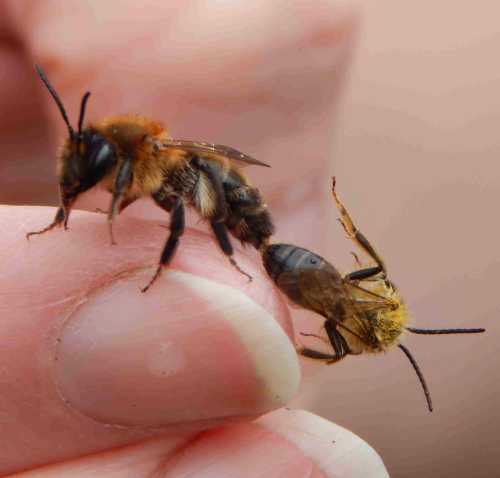
Identifying common pests such as varroa mites and wax moths is crucial in maintaining a healthy bee colony. Varroa mites are tiny parasites that attach themselves to bees, weakening their immune system and potentially transmitting diseases. Wax moths lay their eggs in the comb, causing damage to the honeycomb structure which may lead to the loss of brood or honey. Regularly cleaning and replacing old comb can help prevent infestations.
As you continue to care for your bee colony, you will soon be rewarded with delicious honey! Harvesting and enjoying your honey requires proper technique which we will discuss in the next section.
Harvesting and Enjoying Your Honey
Now that you have learned how to maintain your hive successfully, it’s time to reap the sweet rewards of all your hard work. Harvesting honey is an exciting and satisfying experience that will fill you with pride for what you’ve accomplished. You can expect to harvest honey once or twice a year, depending on the size and productivity of your colony.
To harvest the honey, you’ll need a few essential tools like a bee suit, smoker, hive tool, and an extractor. Once everything is ready, remove the frames filled with capped honey from the hive carefully. Then use a hot knife or uncapping fork to remove the wax caps from each frame before placing them in the extractor. Once you’ve extracted all of your honey, store it in clean jars at room temperature until it’s ready to use.
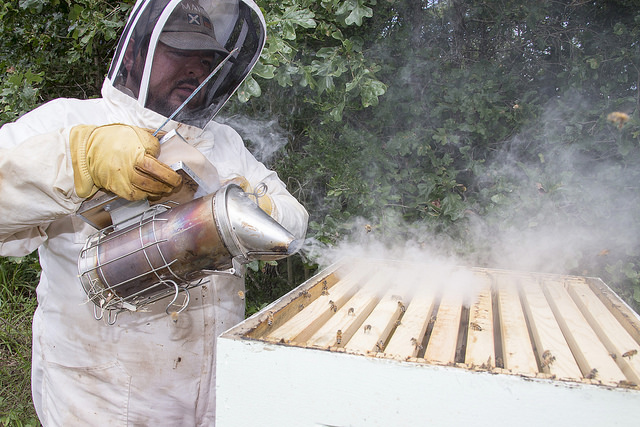
Now that you have harvested your fresh batch of pure golden nectar, let’s explore some fun ways to enjoy this natural sweetener beyond spreading it on toast or drizzling over oatmeal. Honey has been used for centuries as a natural remedy for ailments such as coughs and sore throats due to its antibacterial properties. It can also be incorporated into delicious recipes like salad dressings, marinades, and desserts like baklava or honey ice cream! So why not try out some new recipes while enjoying all the health benefits that come along with consuming raw unprocessed honey?
Frequently Asked Questions
How do I protect my beehive from predators such as bears or raccoons?
When it comes to protecting your beehive from predators like bears or raccoons, there are a few strategies you can employ. One effective method is to use natural deterrents such as planting certain herbs or flowers around the hive that these animals don’t like the smell of. You could also consider using physical barriers like electric fencing or putting the hive on a raised platform out of reach. It’s important to remember that prevention is key – make sure any potential food sources for these predators are removed from the area and keep your hive clean and well-maintained. By taking these steps, you can help ensure the safety of your bees and their home while enjoying all the benefits of having your own colony.
Can I start a bee colony in a small backyard or do I need a large space?
Starting a bee colony in a small backyard is definitely possible! There are plenty of small space options for beekeeping, including vertical hives and rooftop gardens. Before starting your colony, make sure to research the specific needs of bees and create bee friendly landscaping with plenty of flowers and plants for them to pollinate. It’s important to remember that bees need ample space to fly and forage, so be mindful of overcrowding. With patience, passion, and proper care, you can successfully maintain a thriving bee colony in even the smallest of backyards.
How often should I clean my beehive?
Cleaning your beehive is an essential task that ensures the health and productivity of your bees. Did you know that one in ten hives in the US die each year due to poor sanitation? That’s why it’s crucial to maintain a regular cleaning frequency and use proper sanitation techniques. Depending on the season and weather conditions, you should inspect and clean your hive every two to four weeks. Start by removing any dead bees, debris, or mold from the bottom board before checking for mites or pests on frames. Use a hive tool to scrape off propolis and wax buildup on the inner walls, then sanitize with a solution of water and bleach or vinegar. A clean hive not only prevents diseases but also keeps your bees happy and thriving. Remember that being a beekeeper requires dedication, patience, and respect for these tiny creatures’ hard work!
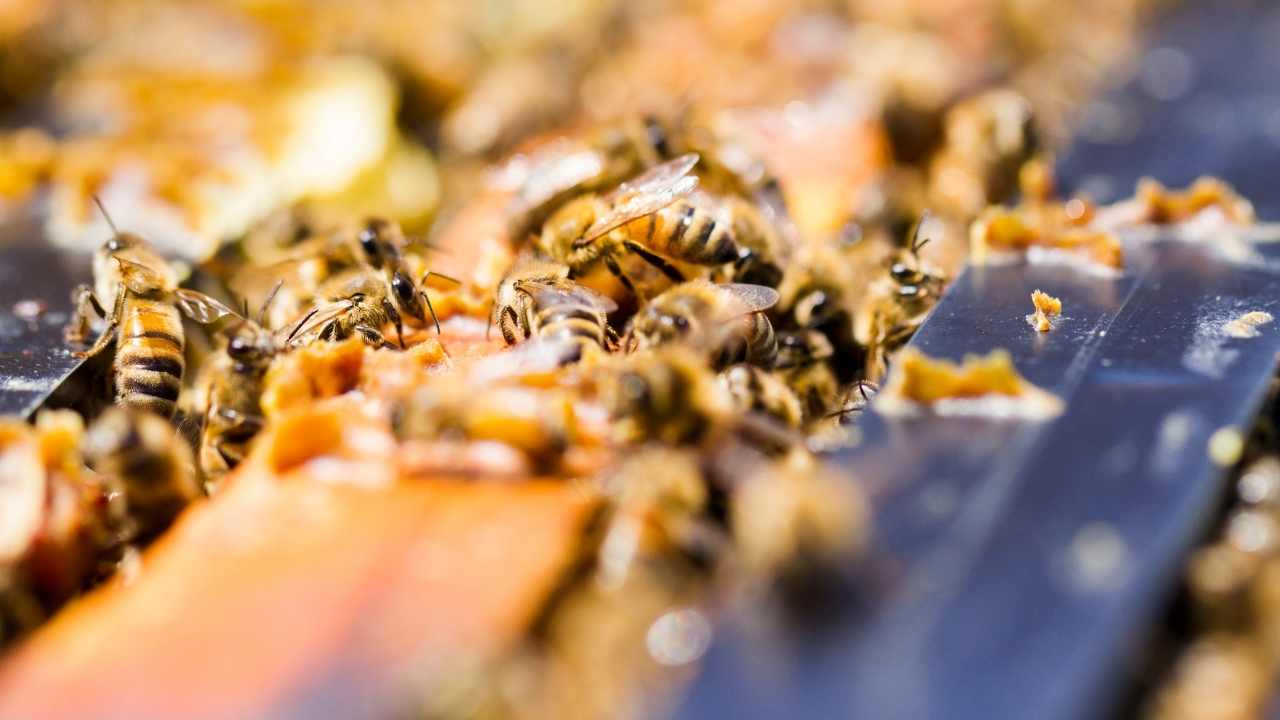
What should I do if my bees swarm?
If your bees swarm, it’s important to act quickly and safely. First, don’t panic – swarming is a natural process for bees and doesn’t necessarily mean there’s something wrong with your hive. Second, find the swarm and safely rehome them in a new location away from people and animals. You can do this by using a cardboard box or beekeeping equipment to gently scoop up the bees and transfer them to their new home. It’s important to wear protective gear and follow beekeeping safety protocols during this process to avoid getting stung. Remember that beekeeping is a rewarding but serious responsibility, so always approach it with knowledge, patience, and passion for serving these incredible pollinators.
How do I know if my bees are healthy and thriving?
To ensure your bee colony is healthy and thriving, it’s important to monitor them regularly. This can involve checking for signs of disease, such as deformed wings or a lack of activity in the hive. Additionally, you should observe their behavior and note any changes, such as increased aggression or decreased honey production. Regular inspections will allow you to catch potential issues early on and take action before they become more serious. If you do identify a problem, there are resources available to help diagnose and treat your bees. Remember that keeping bees requires patience and dedication, but the rewards of a thriving colony make it all worthwhile.
Conclusion
Congratulations on taking the first step towards creating a buzzing backyard! Starting and sustaining your own bee colony takes patience, knowledge, and passion. By following these tips for choosing the right location for your hive, understanding bee behavior, obtaining your bees, providing proper nutrition, maintaining your hive, and harvesting and enjoying your honey, you’ll be well on your way to becoming a successful beekeeper.
Imagine waking up each morning to the sound of busy bees pollinating your garden. You watch as they collect nectar from flowers and bring it back to the hive where they turn it into delicious honey. As you harvest your own honey for the first time, you feel a sense of pride knowing that you have contributed to the preservation of our planet’s vital ecosystem. With some hard work and dedication, this can be your reality too! So get out there and start creating a buzz-worthy backyard today!
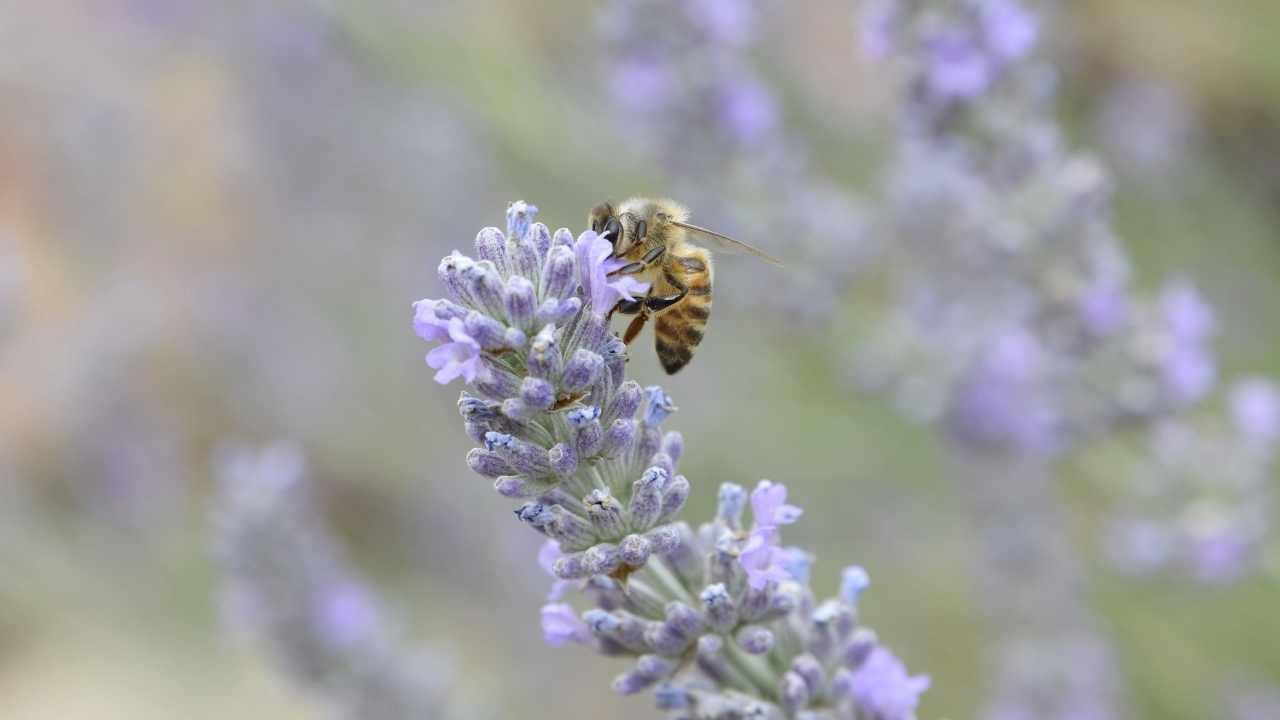

Roger Thomas is a seasoned beekeeper and hive architect with a deep-seated passion for sustainable living. His fascination with bees has shaped his professional career, giving him practical and theoretical expertise in bee behavior, colony health, and optimal hive conditions. Roger’s technical skills shine in his bespoke hive creations that cater to the specific needs of diverse bee species, while his sustainable practices promote environmental balance and the wellbeing of the bee population.
As he continues his journey in beekeeping, Roger has become a dedicated advocate for responsible practices and an insightful educator in his field. His posts aim to inspire new beekeepers, underline the importance of sustainability, and showcase the remarkable contribution bees make to our ecosystem. Roger invites you to join him as he delves into the world of bees and the rewarding, honey-sweet art of beekeeping.

